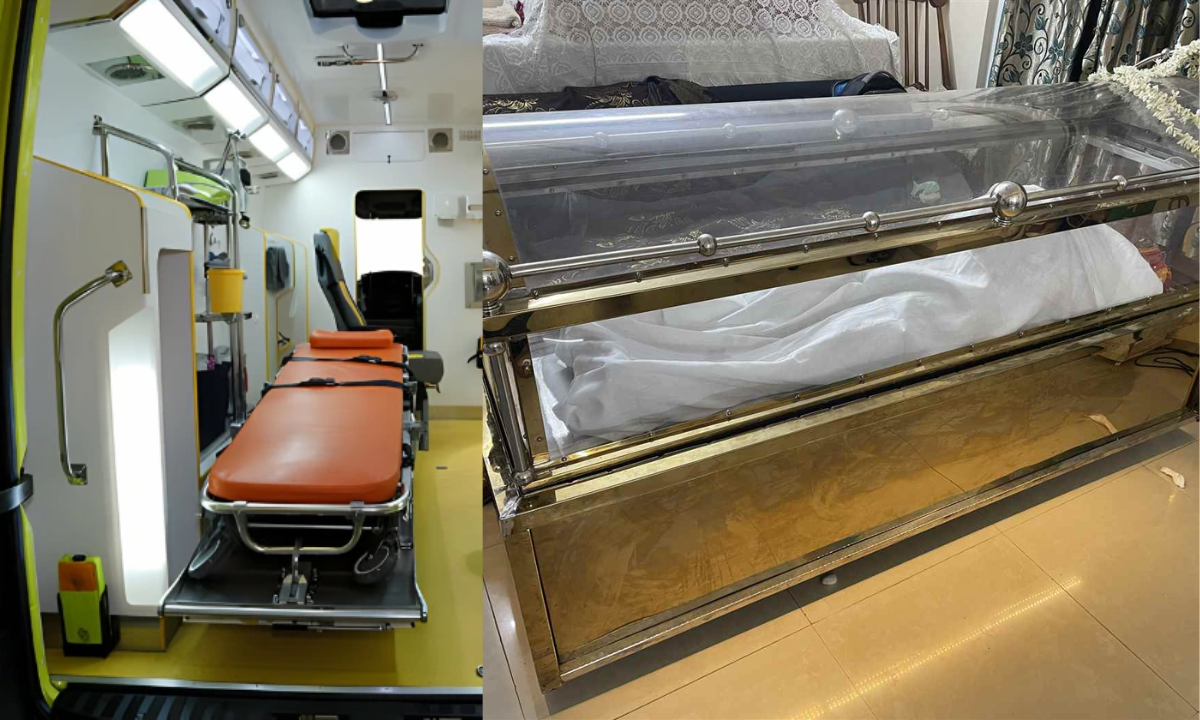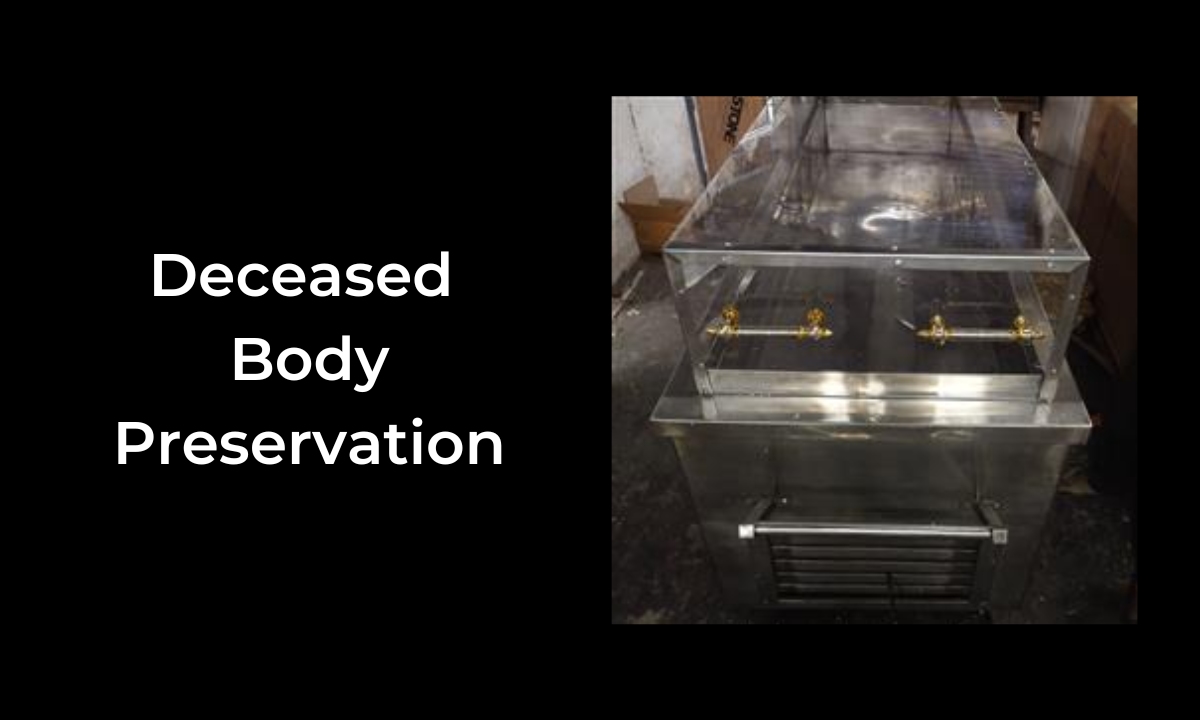After death occurs families must organise transportation arrangements for their departed loved one’s body. The procedure becomes harder to manage when the deceased needs to be transferred between cities, states, or international borders.
Multiple elements determine the duration of deceased body preservation and which preservation methods should be implemented after death. The article presents clear explanations of preservation elements while providing information to clarify the fundamental operating principles of this procedure.
Why Is Preservation Important?
When someone dies the natural decomposition process starts immediately after death. Both temperature and humidity levels along with bacterial colonisation within the body system determine how fast decomposition happens.
The body deteriorates fast when inadequate caretaking occurs which creates safety hazards while causing additional emotional stress to loved ones. The preservation method selection process depends on transport distance and duration length.
Factors That Affect the Preservation Time of a Deceased Body
Multiple different elements decide the duration for which a deceased body remains suitable for transport. Below are some of the key aspects to consider:
1. Environmental Conditions
The speed at which body decomposition happens depends heavily on environmental conditions. Fast decomposition takes place when temperatures stay hot and humidity levels remain high thereby requiring immediate preservation steps.
2. Preservation Method
How long a body stays stable depends on which preservation method doctors select. Different preservation methods including refrigeration paired with embalming procedures together with chemical treatment solutions help bodies remain stable during transportation.
3. Timing of Preservation Actions
Body preservation success relies heavily on maintaining its preservation speed after death occurs. Slowing down decomposition proves more successful when body preservation starts shortly after death rather than waiting to perform the procedures later.
4. Legal and Administrative Requirements
Legal requirements along with administrative rules define how long preservation must continue. States and countries that need bodies shipped long distances must approve particular preservation techniques when crossing international borders or traveling between different regions.
Common Preservation Methods for a Deceased Body

The transportation of deceased bodies requires essential body preservation before any movement takes place. Below are the most common preservation techniques used:
1. Refrigeration
For deceased bodies, refrigeration along with freezer box services in Bangalore stands among the most commonly used preservation techniques.
At properly controlled temperatures in morgue or funeral home cold storage, a body will sustain acceptable conditions from a few days to several weeks. With refrigeration, the body is kept at a temperature between 34°F and 39°F (1°C and 4°C). The cold temperature slows down but does not completely stop decomposition.
Refrigeration is an ideal choice for preserving remains temporarily, especially if there is a short delay in arranging transport.
2. Preserving a deceased body through embalming has become a familiar approach for extended time management when death occurs. A treatment method involves chemical substance injection into the body while also decelerating decomposition. Preserving a body through embalming provides excellent appearance restoration which makes it the preferred method for protecting the deceased when public-viewing services are planned for overseas travel.
Proper embalming techniques extend successful bodily preservation to periods between fourteen days and beyond the typical two-week threshold. For international border crossings with deceased bodies embalming treatment may become legally necessary.
3. Ice Packs
The storage of brief transits requires the application of ice packs to regulate body temperature. Ice packs serve as a preservation option after embalming when neither refrigeration nor embalming services are available at short notice but provide minimal body preservation.
4. Dry Ice
Dry ice functions occasionally as a short-term preservation technique. In addition to maintaining body temperature, ice helps prevent decomposition from progressing during this temporary period. Professional embalming and refrigeration remain necessary preservation methods for preserving bodies because ice packs and dry ice solutions lose their effectiveness when dealing with extended storage or long-distance travel.
5. Other Chemical Solutions
The application of specific chemical preservatives functions successfully to cut down the decomposition rates of dead human bodies. The application of special chemicals takes place under religious restrictions or cultural limitations to embalming procedures or to achieve extended transport durability.
How Long Can a Deceased Body Be Preserved Before Transport?
The preservation time for a deceased body before movement depends on multiple elements including the chosen preservation method, local environment and distance to travel. Below are estimated timelines based on different preservation techniques:
1. Without Preservation
Any human body placed unprepared in an environment will start decomposing rapidly within hours when exposed to warm temperatures. Without refrigeration together with embalming makes the transport of bodies impossible.
2. With Refrigeration
A body preserved in a freezer box maintains its quality for a length of 2-7 days. Under exceptional circumstances with constant refrigeration and proper storage conditions, a body can maintain its good condition throughout two weeks.
3. With Embalming
Preservation time extends considerably when a body undergoes the embalming process. Preservation times for deceased bodies embalmed properly extend up to fourteen days with additional length possible through good embalming practices.
4. With Dry Ice or Ice Packs
Similar to ice packs, dry ice manages to preserve a deceased body for 24-48 hours. The technique finds its use primarily for quick intraregional relocations alongside situations when permanent preservation methods like embalming or refrigeration become available.
Legal and Administrative Requirements for Body Transport
Multiple legal conditions must be met when moving a person who has died because regulations differ among locations. Officials in states and other countries enforce requirements to obtain death certificates and burial permits together with specific embalming needs (based on regulations). International body shipment needs two extra permits including a sealed coffin certification along with a body transit permit.
Family Decisions and Cultural Practices
The combination of preservation strategies, cultural customs and family member choices concerns how long a body remains available for transportation after death. When no other options are available refrigerators together with basic cooling systems serve as the primary methods for body preservation.
Obtaining final rites decisions and family coordination with distant relatives requires time from family members during their bereavement process. Preservation techniques mediate insufficient laboratory storage intervals by preserving cultural observances of a deceased body.
Practical Steps for Preserving a Deceased Body Before Transport
If you find yourself in a situation where transporting a deceased body is necessary, here are some practical steps to consider:
1. Licensed professionals possess the training to deal with deceased bodies and can provide acceptable methods to preserve the body for movement.
2. Before transporting human remains you need to understand all relevant local and international laws.
3. Team up with a funeral home to pick what preservation makes sense for the distance and time frame of transport.
4. A swift intervention for preservation leads to improved quality of transported deceased bodies.
Conclusion
The duration required for body preservation before transport depends strongly on both implementation techniques and surrounding environmental elements. Two predominant preservation methods which consist of refrigeration and embalming enable successful tissue preservation spanning weeks in some cases. The preservation process becomes easier to manage during grief when families understand the factors for success while getting expert advice.
The process of preparing and moving a deceased loved one’s bodily remains requires families to create careful plans about preservation techniques.
Kaashimukthi operates as a respected service provider to execute secure dead body transportation in Bangalore while maintaining dedicated care for dignified preservation services.

Madhu is an Entrepreneur, a Mentor, a Writer and an Aspiring Car Race Driver. He is Deeply passionate about leveraging Technology and Human Centred Design to make complex care and End of Life Planning easier. With the ultimate aim of Improving the quality of Life in the Twilight years. Madhu is highly educated and Alumni of IIM-Bangalore, Sikkim Manipal University and Bangalore University besides a Rich Industry Experience in the field of Product Management, Design, Supply chain, Finance, Commercial Management and Funeral Services.

